Bursting with pride and tears welling in his eyes, graduate Evance describes what finishing secondary school means to him and his family.
“We have always dreamed about this day and now it’s actually happening. I’ve shouted out loud but also cried. We feel like WOW! There is now a way, there is hope.”
It’s a milestone that the 20-year-old doubted he would reach a decade ago while living in a two-room mud and stick home in Unga Limited, an extremely poor and densely populated area close to central Arusha. Like many Tanzanian dwellings, Evance’s home had no plumbing; water is collected from a tap for a small per-bucket fee and meals for his family of seven were prepared over a simple kerosene-fueled stove.
“My life before St Jude’s was tough, it certainly wasn’t the way it is right now. I will never forget the day I sat the entrance tests. I was with my mum who was unwell but she still gave me the chance by coming with me. I still remember when I told my mum I had been accepted, we couldn’t believe it and then we celebrated. She said I don’t believe my son actually has a bright future,” Evance beams. The last decade of Evance’s schooling at The School of St Jude has all led to this point. He was determined not to be part of the two thirds of Tanzanian teenagers who are not in secondary school each year.
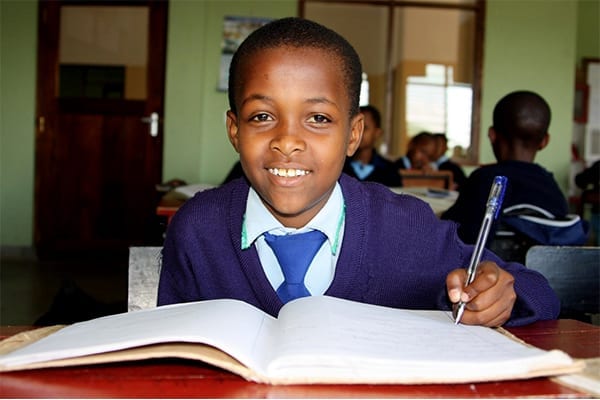
“It wasn’t until I met students from different government schools at a leadership workshop that I really realised St Jude’s has taught me to be bigger than I thought. People in the community respect and value St Jude’s students. It’s hard to find the words to thank my sponsor, it’s not easy to give to someone you don’t know. The most important thing I have gained from St Jude’s is the ability to see that you can help others,” Evance adds.
The bright graduate will first give back to his community as part of the Beyond St Jude’s Community Service Year before the school supports his plans to study graphic design at university.
“I have chosen to do teaching at an under-resourced government school, as I wanted to stretch my hand somewhere else and I want to help people beyond my family. I am full of plans and big dreams,” Evance says, looking out over the Smith Secondary Campus which has been his second home for the last six years.
Joining Evance in sharing his St Jude’s quality education with less fortunate Tanzanians is fellow graduate, Zulfa.
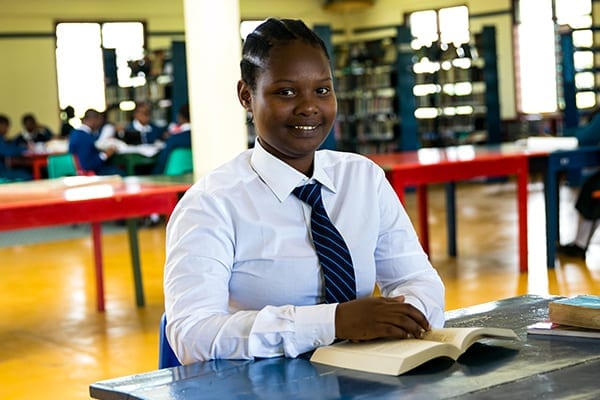
“I studied at a government school before St Jude’s with a lot of kids in one class, with not enough text books and sometimes we didn’t have a teacher for a month. I want to change that so I have chosen to intern as a government school teacher with Beyond St Jude’s. I only have one mission, to leave my community better than I found it,” Zulfa smiles.
The 19-year-old who was raised by her grandma in Mwanama, a poor and semi-rural area not far from Arusha city, also wants to use her education to break down the barriers of gender inequality in her country.
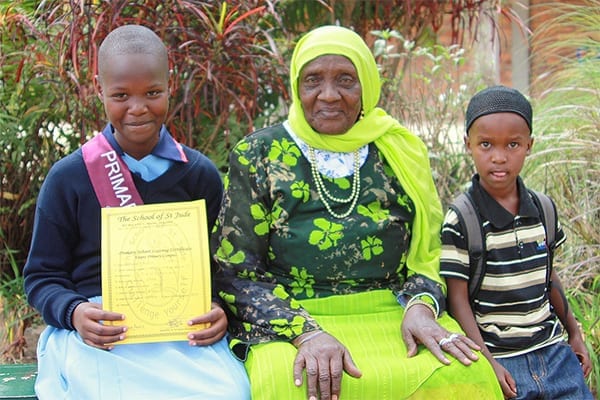
“It is a great honor to be a girl who has been supported through her education and without being another mouth to feed in her family. Many of the girls my age are already wives and already have big families, but I am proud leaving St Jude’s being an independent woman,” Zulfa explains.
With plans to study Development Studies or International Relations and dreams to work for an international humanitarian organisation, Zulfa has these stirring words to share as she takes her first steps towards her bright future.
“I am one of the blessed ones. St Jude’s has taught me to receive freely and give freely. I leave with 169 new friends and as part of the biggest class to be graduating Form 6 in St Jude’s history, I know our class can certainly better our country.”
Evance adds a pledge he will live by long after he walks out of the St Jude’s gates for the last time as a student.
“If I were to tell Mama Gemma and our supporters one thing, I would say, I am really grateful. I want them to know that I won’t let them down and will make sure that what I have gained from St Jude’s, I will invest to change the community around me.”
Can you see the change in Evance’s & Lina’s lives? Help other students like them to reach this important milestone. Sponsor an academic scholarship during our 2019 Annual Appeal.
“Hold on, take a moment to celebrate. There is music in the wind, let’s dance one more time. There’s a rhythm deep within, let’s dance one more time. One more time, sing a song, we will remember.”
These were the stirring lyrics that rang out across the Smith Secondary Assembly Hall on May 25th as the Class of 2019 raised their voices in perfect unison, the joy palpable in the air. Proudly singing their farewell song to the people that helped them reach a milestone unattainable for many young people in Tanzania – graduating from secondary school – they sang their gratitude for what had been and hope for what was yet to come.
Special guests, sponsors and donors from Australia, the UK and the United States, parents, St Jude’s staff and students packed out the hall to see the school’s fifth Form 6 year group walk across the stage to receive their leaving certificates.
St Jude’s Founding Director, Gemma Sisia, honoured not only the students but the whole St Jude’s community who have worked together tirelessly to create long-lasting change for the students throughout their 13 years of education.
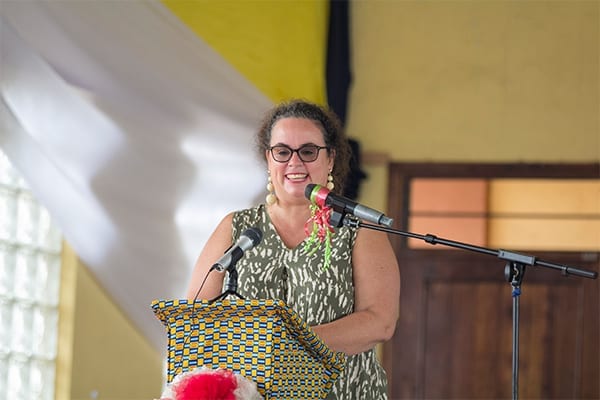
“It is a wonderful celebration today, it’s our largest Form 6 cohort so congratulations to all 169 of you. You have a future of opportunity stretching out in front of you. However, you wouldn’t have reached where you are without a lot of people behind you doing a lot to help you on your way.”
“You wouldn’t be in this hall if it wasn’t for the Smith family, we wouldn’t have a school if we didn’t have a School Board - Mama Maeda has never missed a board meeting, our Parent Committee who help bridge the gap between home and school and, of course, we are very humbled by the contribution of our sponsors and donors,” Gemma said from the heart.
She also recognised all of the staff, without whose contribution the school would not run. Managers were gifted the sought-after Tanzanian delicacy of a chicken and our hardworking Secondary Headmaster, Mr Mcharo, was gifted a cow! He has plans to share his gift with the whole school.
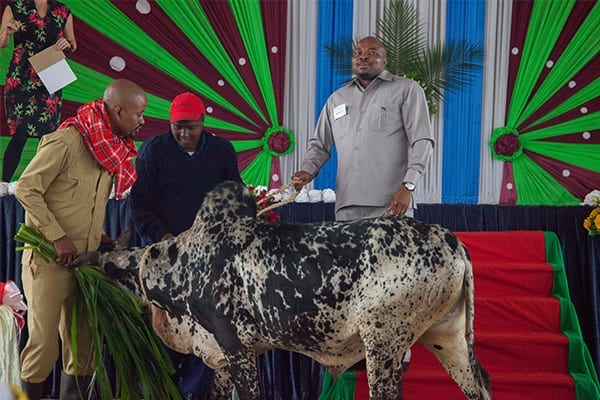
Primary students and the award-winning Ngoma dance club added vibrant musical items to the program and Mr Tsingay ensured the proceedings ran smoothly taking the role of Master of Ceremonies.
A highlight of the day was a passionate address from graduates Rahim and Zulfa, who reflected on the achievements of their year level and the challenges ahead of them.
“We would like to show our sincere appreciation to our beloved Mama, Gemma Sisia, for her hard work and kind-hearted spirit. You have supported our education by working with donors and sponsors for so many years! Many of the sponsors and donors have crossed oceans to witness our graduation today and your work has made us stronger people.” Rahim insisted.
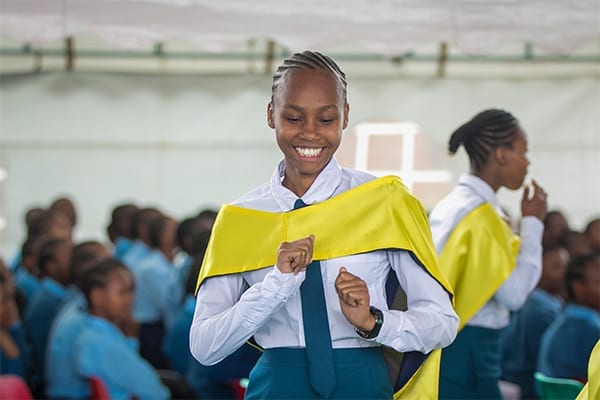
The audience also heard from sponsor, Jenny Fitzpatrick, who spoke to the graduates on behalf of all of the school’s sponsors and donors, particularly all that had travelled long distances to be part of the day.
“The graduation program is a wonderful experience and a wonderful chance to get to know our students. We would like to thank your families who have welcomed us into your homes and into your hearts. You are the future, enjoy your celebrations,” Jenny beamed.
Before drawing the ceremony to a close, Mr Mcharo asked students to remember one important thing from their time in the classroom, “mathematics teaches us one important thing, every problem has a solution”. Our graduates are now equipped with the tools to be a solver of problems; a receiver of opportunities and a beacon of inspiration.
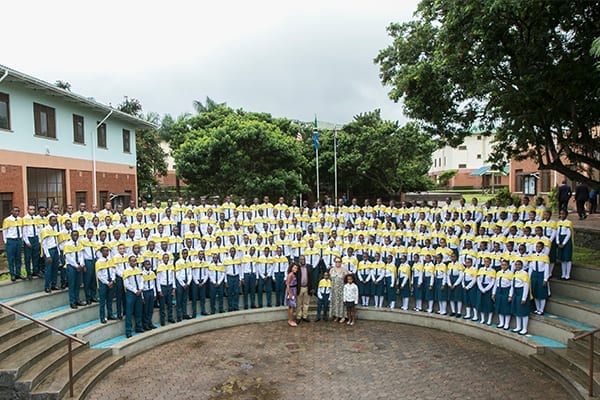
It’s all thanks to the combined effort of thousands of people worldwide, who see the change that is possible for our students. Celebrating 169 of our Form 6 students graduate demonstrates exactly how St Jude’s is fulfilling its mission of ‘fighting poverty through education’.
Congratulations to the Class of 2019, we are all so proud of you.
Give more bright, poor students the gift of graduation by sponsoring their academic scholarship today as part of our 2019 Annual Appeal.
A buzz filled the Smith Campus assembly hall as more than 50 supporters from Australian enterprise software company TechnologyOne helped steer 100 Form 5 students on the right career path.
Every St Jude’s student involved soaked up the opportunity to learn how they can make the most of their high-quality education, engaging in ‘speed careering’ with the talented international visitors.
“Students asked lots of questions about what we studied and how we got to where we are. I hope I imparted on them that within every industry there are many different opportunities. You don’t have to stick to the same job. University gives you endless opportunities and pathways. I see a very bright future for these students,” TechnologyOne’s, Ben Malpass, beamed during the sessions.
The visitors, who are at the peak of their professions, also offered advice on CV writing and interviewing techniques, a part of the career guidance curriculum.
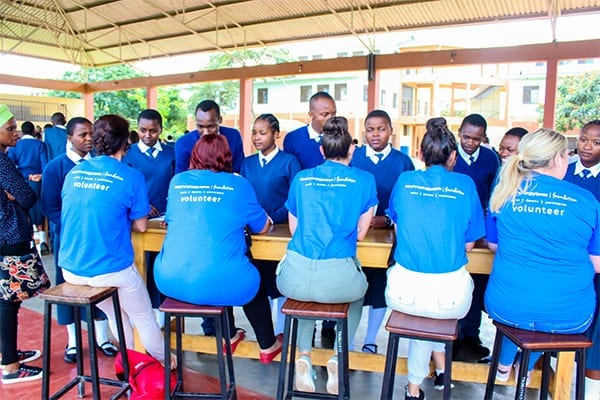
“It’s a priority for the school for students to be job ready. Speaking with professionals helps open the eyes of our students to all the possibilities within each course of study. Students start selecting their education path from Form 2 so they need guidance quite early. They might be the best students at advanced mathematics but they may not know how to have a conversation with someone during an interview or have critical thinking. Having extra lessons and professional talks in place is fantastic; students are becoming more engaged,” St Jude’s, Deputy Director, Angela Bailey, expressed.
Those extra regular career guidance classes are now possible after the appointment of full time Career Guidance Coordinator, Mr Elibariki, this month.
“Career guidance is growing at the school. Before coming here, I worked at a college so I am able to give students a real insight into what to expect in higher education and help them make informed choices. We use different theories to work out each student’s strengths and what career would suit them. We are doing job market research so we can tell our students the thriving and growing industries they can enter into,” Mr Elbariki explained.
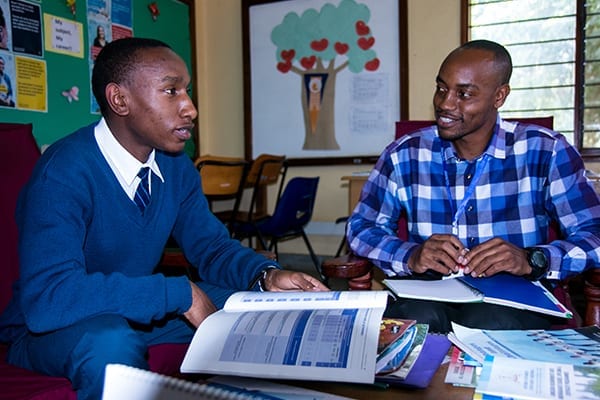
One of more than 1,000 secondary students to benefit from the extra expertise is Form 6 Graduate, Ojungo, who admits that before St Jude’s his life was already mapped out for him.
Despite loving science from an early age, like many Tanzanian children, his only career opportunities were presented by his parents who struggled to support the family themselves. Life was tough, living in a mud hut home without electricity and water supply. Ojungo recalls an endless cycle of wanting to “break out”.
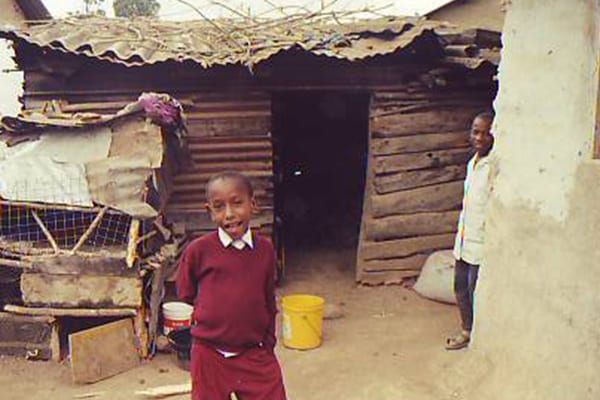
Fast-forward a decade and ten years of St Jude’s high-quality, free education and things look very different. Ojungo credits the career advice outside the traditional classroom, as well as what he learnt in it, to his success.
“Thanks to the career guidance team, I have decided to study Biochemistry at University. The staff helped me identify my strengths and I want to do research into different chemicals that help the world at large. Most Tanzanian students don’t have a chance to ask someone for career advice and if I didn’t have that, I could have selected the wrong areas to study and found it difficult to get employed,” Ojungo reflected.
Showing how the future scientist can now see the possibilities that come from achieving his full potential, one career guidance lesson at a time! Help us continue to offer our students the support and advice they need to navigate their path to become professionals, donate to our Career Guidance program for our 2019 Annual Appeal.
The path to The School of St Jude has been tougher than most for new Form 1 student, Edson.
Born with ‘knock-knees’, his legs have grown angled inwards and the teenager is in pain with each step he takes.
The spirited student refuses to let his limitations define him. With sheer determination, Edson trekked two hours from his home in the Maasai tribe heartland, Nadosoito, to his under-resourced government primary school for seven years.
Whilst he was often late, unable to walk at the pace of his classmates, Edson never missed a day. As the oldest son he also herded cows after school to support his family.
Edson recalls being labeled a “hopeless cause” by many but he was quietly working towards a better life.

“A letter was bought to my primary school promoting the selection day at The School of Jude and this became my motivation. The life for my family is very hard here because there is hardly any water. I want to change this,” Edson explains.
As Edson’s family continued to struggle without water, their supply diminishing at the distant fill up taps as the borehole dried up, Edson improved his grades to a standard that saw him pass the St Jude’s Form 1 entrance exam with flying colours.
Before he knew it, St Jude’s bright yellow bus arrived at their traditional mud-hut home, one hour south of central Arusha and he was set for the ride of his life.
Recalling that day, Edson’s mother, Helena, becomes emotional, hugging her son tight as he rejoined his family during the midterm break.
“Edson was an obedient child; he did not used to talk much and behaved well. He loved to go to school despite having problems with his legs. I feel so encouraged and proud now he is at St Jude’s. He has told me how the school is providing him with a good place to sleep, eat and study. It means a lot to us because he will help to eradicate the poverty around us here.”
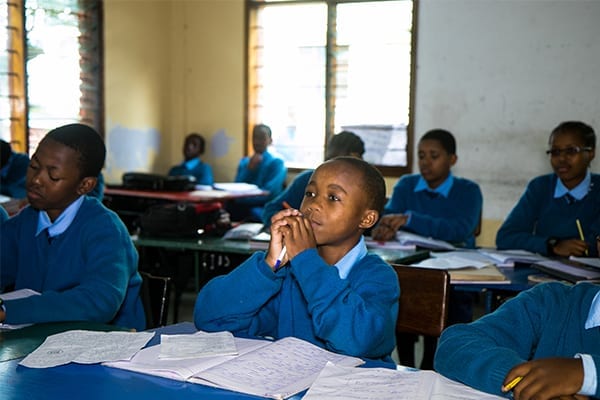
Reaching secondary school is an achievement in itself for Edson and his fellow Form 1 classmates who joined St Jude’s from government schools in January. It is estimated that only 30% of secondary school aged Tanzanians are in education. This statistic is reduced even further in remote Maasai areas, but Edson is part of changing that trend and inspiring others in his community to change it too.
Edson’s teachers say he’s already thriving in his favourite subject, English, and has even started to teach his brothers and sisters the language. In this way the whole family can benefit from the education Edson is receiving, providing opportunities for them beyond their small village.
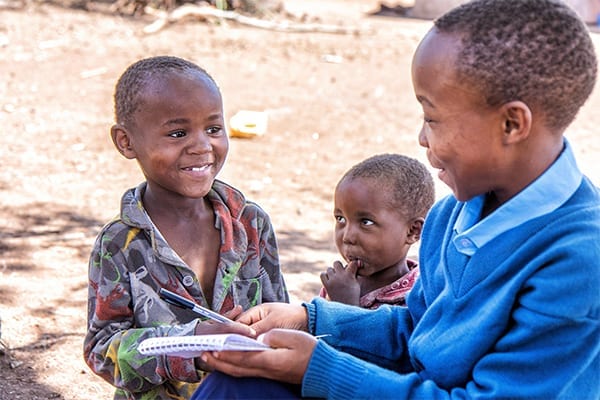
“I love The School of St Jude because they have a lot of teachers and a big library. I am now sharing what I am learning with my family and tribe,’ Edson proudly shares.
It’s truly been a life-changing year for Edson. Not only has he secured his place at St Jude’s, the school’s welfare team has also reached out to doctors at a nearby medical charity, who have agreed to perform an operation to help correct his painful condition.
“I am not scared of the operation as I want my legs to be straight,” Edson announced with that same determination crossing his face once more. While in his mother’s eyes there is a sense of relief. “We went to the local hospital and were given tablets as treatment but they never worked and I didn’t have the money to take him to the special doctor that they told us to see. I am so thankful the school is now helping us find treatment,” Helena says as tears start to well in her eyes again.
The post-operation recovery is expected to be six weeks of bedrest but Edson knows this is just a small hurdle in achieving his ultimate goal.
“I see myself as an electrical engineer so I can bring electricity to our village, either that or a teacher, like my mother wanted to be,” Edson quietly shares.
A dream that with his tenacious attitude, big heart and bright mind, he can certainly achieve.
The path to his chosen profession is a lot brighter now for Edson, as is the outlook for his whole family, thanks to The School of St Jude, fittingly named after the Saint of hopeless causes.
A label no one will ever call Edson again.
Edson’s academic scholarship, like a number of our new students, is not yet sponsored. His place at St Jude’s is covered by general donations. Sponsor or donate today to see the change in the lives of students like Edson when they benefit from a free, high-quality education.
For as long as 15-year-old Dastan can remember he’s dreamed of soaring high.
His ambition to become a pilot started from studying picture books under a kerosene lamp – his family didn’t have electricity at their home.
Dastan and his family live in one room in a compound in Lemara, a poor and densely populated area close to Arusha city, located near sewerage works.
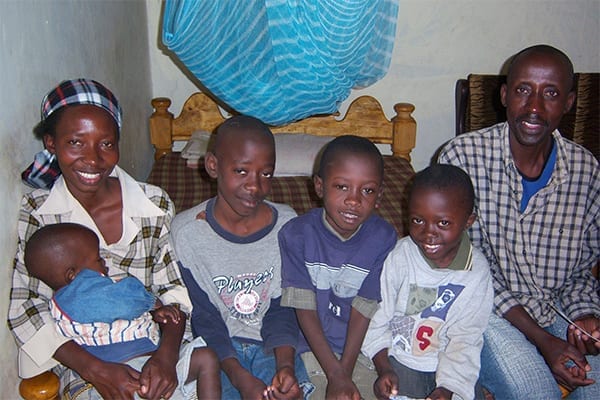
Dastan was accepted into The School of St Jude in 2012 in Standard 1, an opportunity he knew he could use to make his dream a reality.
Seven years later, the Form 1 student has been able to take advantage of the resources at St Jude’s and continue his reading in the fully equipped libraries to give him the best chance at a life in the sky.
Part of these extra resources included a school excursion this month to the Kilimanjaro International Airport, a bustling hub of regional and long-haul flights and aircrafts, where industry-leading pilots took Dastan under their wing.
“This has been the best day as I have actually seen pilots at work. I have learnt a lot more of the specifics, like performing the perfect landing and takeoff formations of planes. I would like to work for a big airline like we have seen today, as I would get to travel to new places. I even asked the workers we met today if they had any jobs going but they said I need to go to university first,” Dastan laughed while admiring the a jet landing on the airport’s runway.
It’s a plan that his father Maombe, who works as a security guard and his mother Soki, a factory worker couldn’t be prouder of.
“They are so supportive of me and grateful for all the opportunities St Jude’s is giving me. Before I started at the school life was pretty tough, but when I started at the school my life did a 360, to use an aviation term,” Dastan smiled.
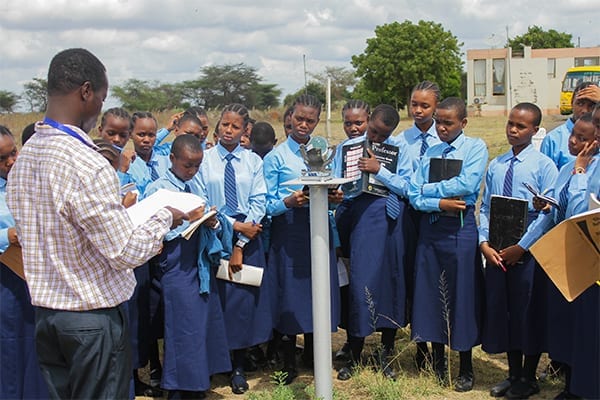
This aviation enthusiast was just one of the 150 wide-eyed Form 1 students thriving from being inside an airport for the first time. None had ever seen an aircraft up close, let alone step on one to travel.
“These practical experiences are part of what differentiates The School of St Jude from other under-resourced government schools. We certainly have many students who want to work in the aviation and travel industries. Quality education is theory, but also practical, and once you take out students to excursions we are giving students motivation to achieve their dreams,” Head of Geography and General Studies, Mr Elimringi said, while ushering students through the airport.
Another highlight was a visit to the airport’s Bureau of Meteorology where students were able to see the topic of weather and climate from their Geography class come to life.
“Weather impacts our lives every day here in Tanzania, in almost every job, so metrology is an important field to understand. I have been able to see how to measure weather practically and I was surprised they had to record rainfall on the rain gauge every three hours,” Form 1 student Beatrice explains, while examining the Bureau’s technology with Dastan.
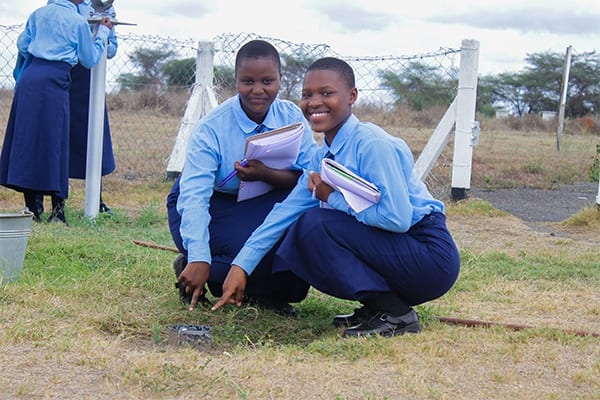
Both agree that their yearly excursions are preparing them for their future high-flying careers and already have plans about how they will share their good fortune with others.
“One of my wishes is to be able to give back to my fellow St Jude’s students once I am established, help them if they wish to be a pilot too,” Dastan explained, looking out onto the runway.
Certainly Dastan’s flightpath and future is brighter and less bumpy now, compared to the one he first dreamed about under the kerosene lamp, thanks to his St Jude’s education.
Help our student’s dreams get off the ground. Sponsor an academic sponsorship today.

As the St Jude’s Smith Secondary Campus became a bustling exhibition for the annual Science Day, there were some new demonstrators delighted to be part of the much anticipated event. For the first time in the exhibitions’ nine-year history, St Jude’s graduates now teaching at under-resourced government schools as part of the Beyond St Jude’s program, brought their students to demonstrate their hard work.
This collaboration is one of the ways our graduates are giving back to the community through their Community Service Year before going on to higher education.
Njiro Secondary School student, Emmanuel John, presented an impressive environmentally friendly car powered by solar panels and a remote control, with the help of his teacher and St Jude’s graduate, Nembris.
“The direction of the car is created through positive and negative charges. This car has many advantages as it can be sent into remote areas where humans can’t go. They can control it from a distance. It can also be used in our National Parks to protect them and replace cars that are using fuel,” Emmanuel John proudly informed a crowd of students.
This entry caught the eye of the exhibition judges too, with Emmanuel’s project winning the inaugural government school category and Emmanuel receiving a donation to help expand his idea.
But the judges job didn’t stop there. The annual exhibition has traditionally been the birthplace of some of East Africa’s most prominent youth innovations and this year did not disappoint.
“We have had lots of success in our Science Department on a national level and I expect we can have more. Science is growing at the school. We placed 1st and 2nd in the country over the last two years in Tanzania’s Young Scientist Competition. Students are doing projects from the topics they are studying in class,” Acting Science Deputy, Elibariki, explained while judging the projects.
The competition was fierce in the main exhibition categories, with many lab-coated students focusing on environmentally friendly innovations.
Form 4 students, John and Steven, were the overall winners with their creation of a digital home optimization system that works as a wireless security system.
“We are passionate in electronics and gaming. We want to see technology advanced in Tanzania. The project includes automation, a security system and a digital system,” said John bursting with pride, as he and his team accepted their certificate in front of an audience of more than 700.

A tree planting drone, built by Form 3 students Rajab and Athuman, was named runner up with judges impressed with the practicality of the project.
“This is going to be cost effective for the Agriculture sector as we used materials like DVD cassettes to build it from scratch. We need to plant more trees to reduce the risk of global warming too,” Athuman explained while showing students his project.
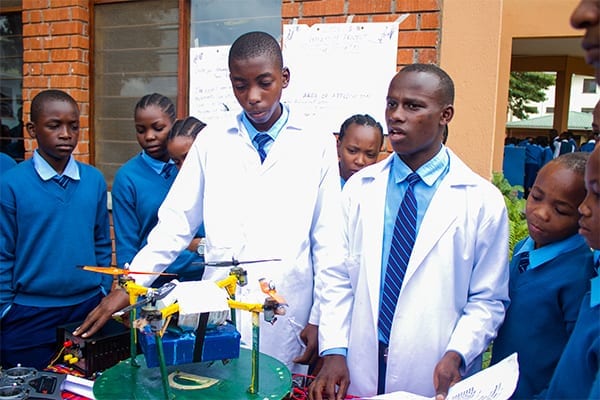
Taking third spot was Form 6 student David’s natural take on plastic, creating a biodegradable plastic alternative from natural ingredients including water, olive oil, gelatin and table salt.
“It is needed in Tanzania because plastic bags that are not decomposable have recently been banned so this is an alternative that I think could really work,” David enthused.
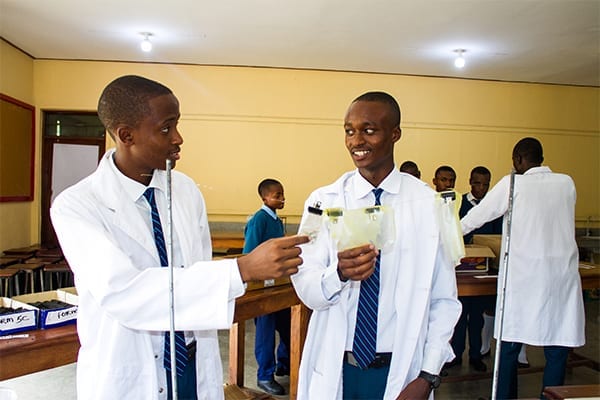
But innovation and scientific intrigue is not limited by age, with a security robot display curated by Standard 6 students another standout of the day.
“The aim of our project is making Tanzanian homes safer in an environmentally friendly way. We used wood, boxes, jugs, a bucket, solar panels and batteries. It will make an alarm if there is an intruder or if there is a fire near the home,” Standard 7 student Karen shared.
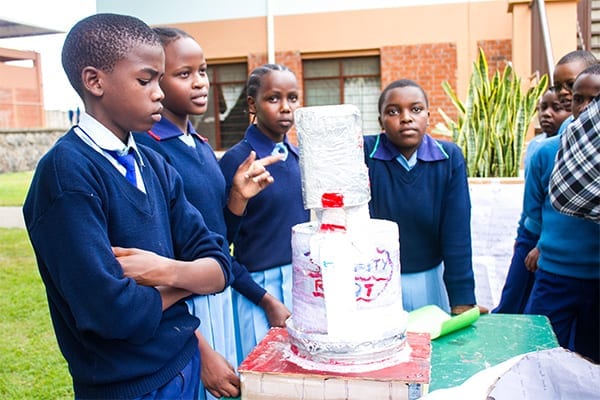
All exhibition winners now have the chance to represent St Jude’s at major events across Tanzania but the success of the day certainly spreads much further, with hundreds of students from all backgrounds and areas now inspired to study science thanks to The School of St Jude.
The 2019 Science Fair may have just discovered the next internationally acclaimed young scientist! Sponsor a student's academic scholarship and help them achieve their dreams.